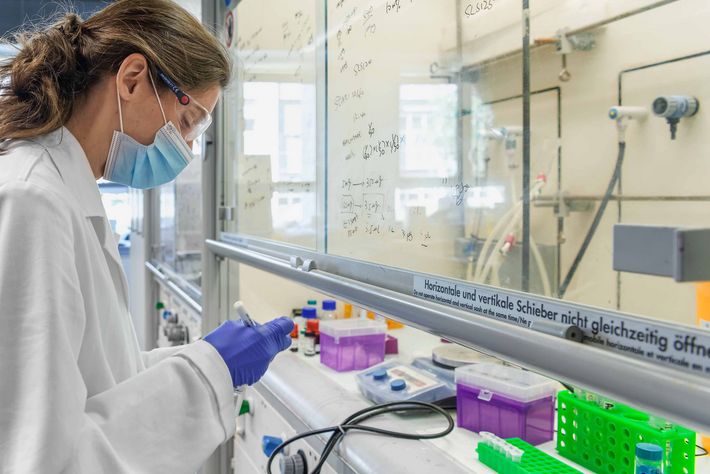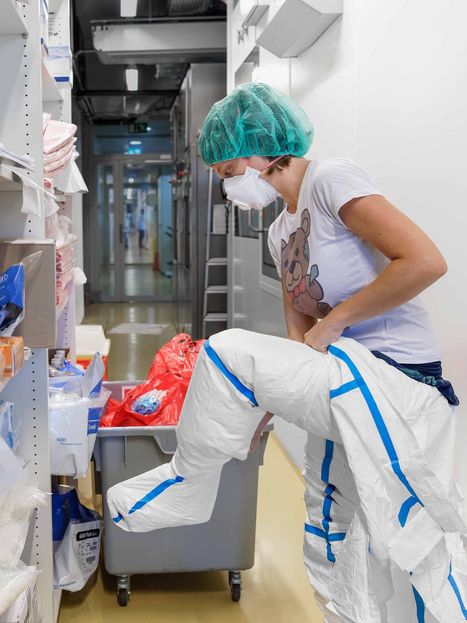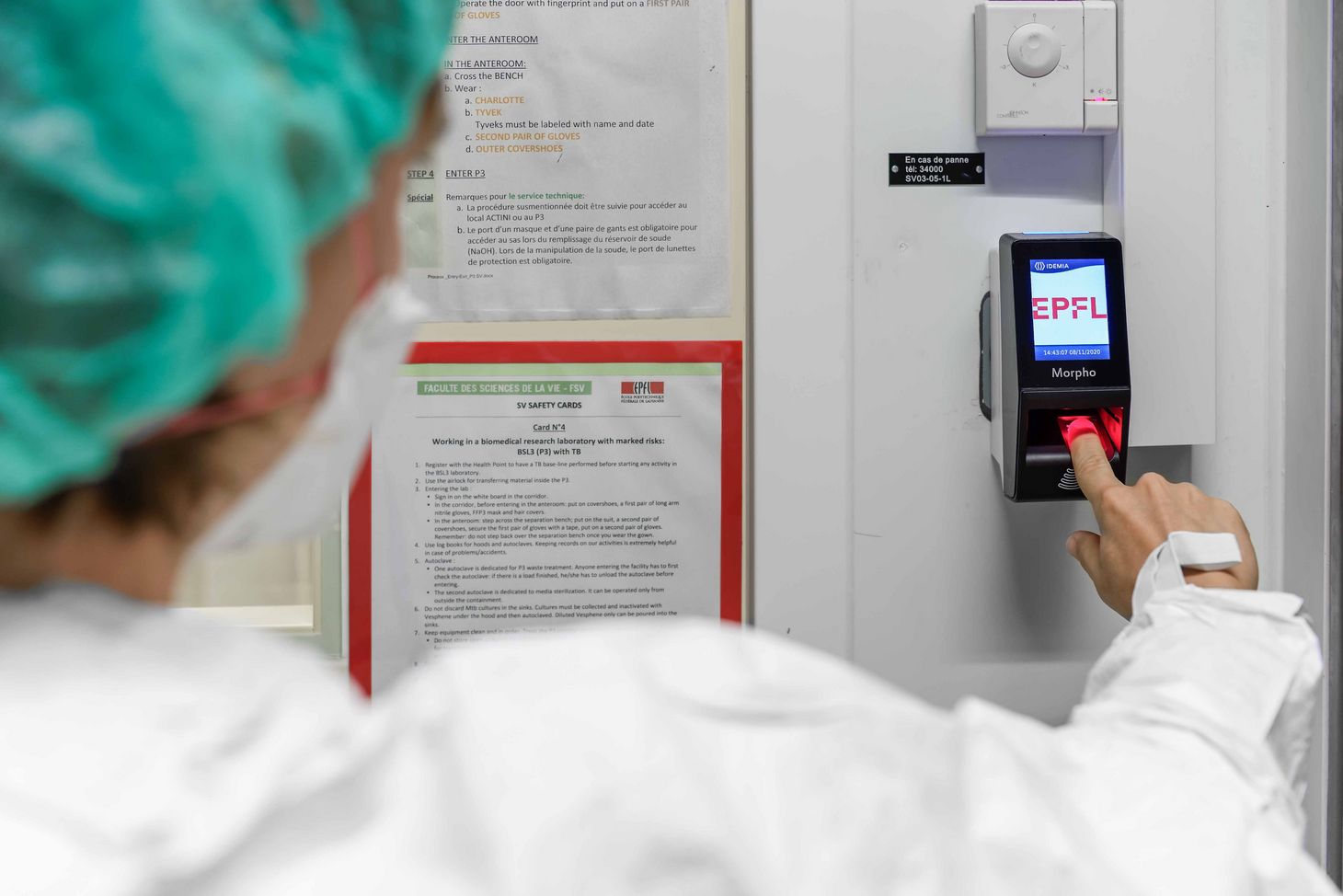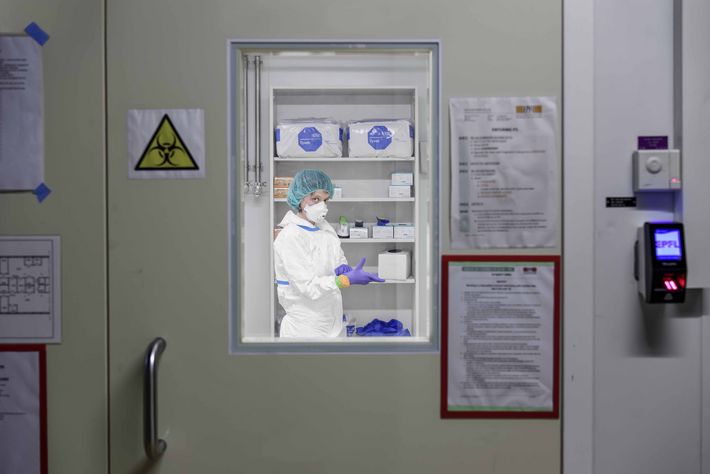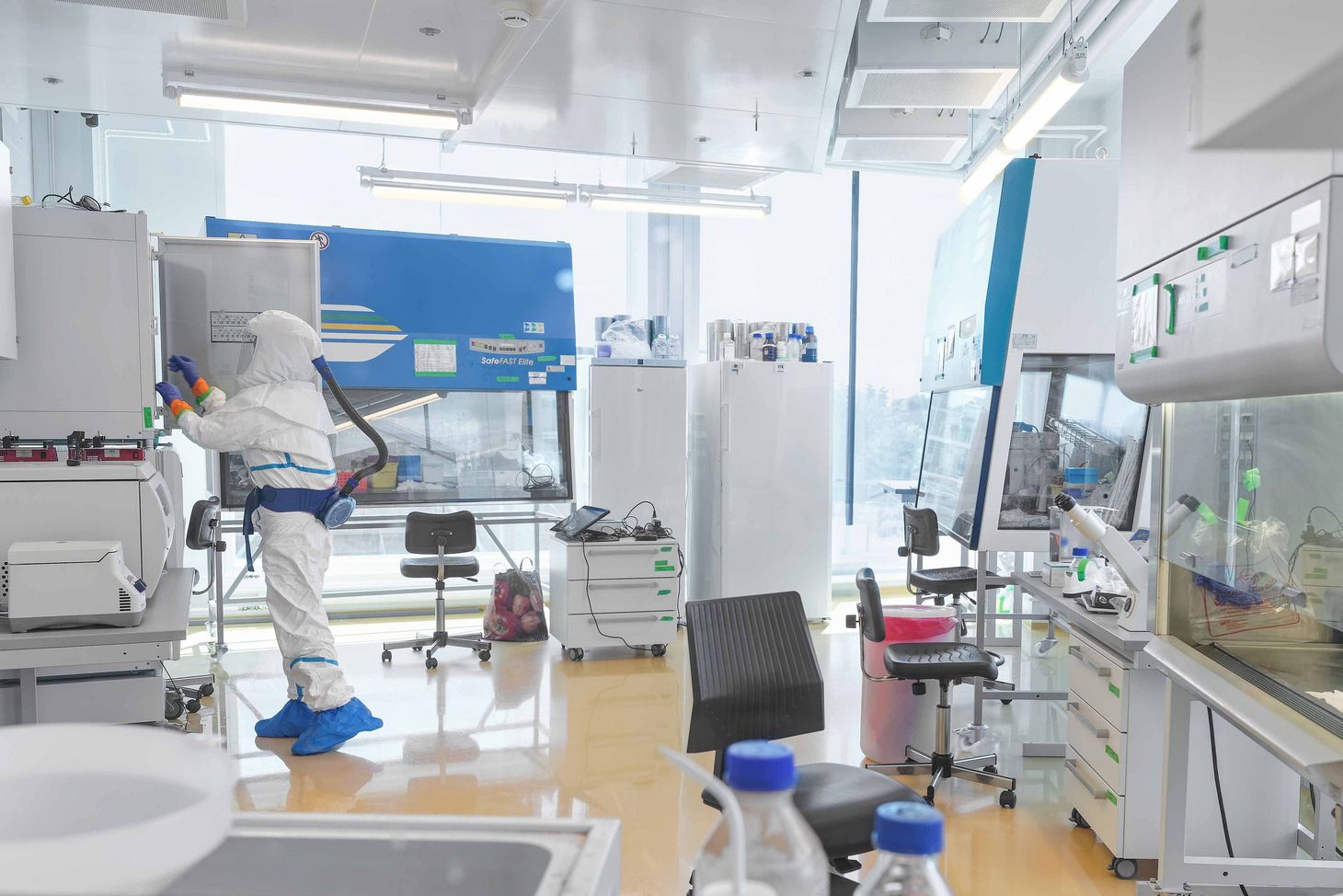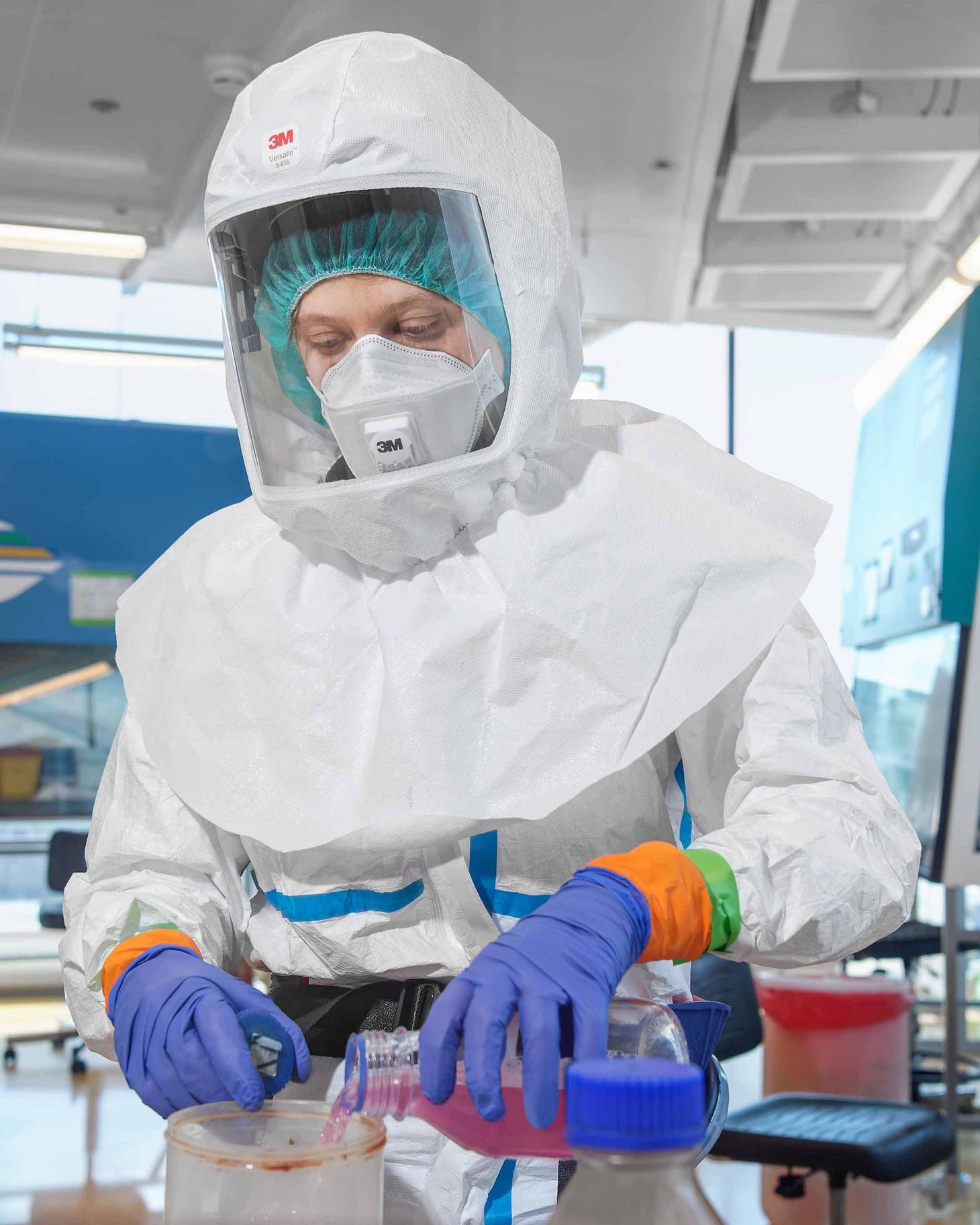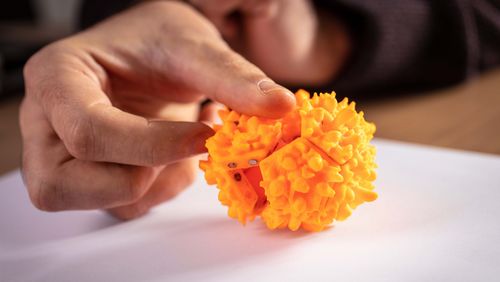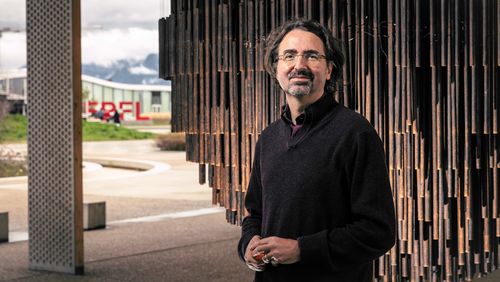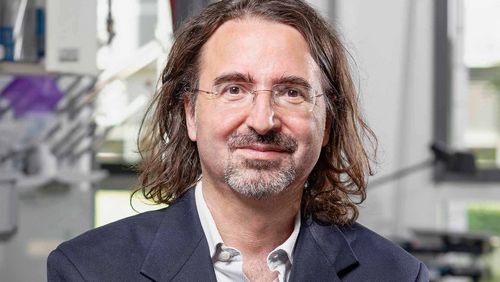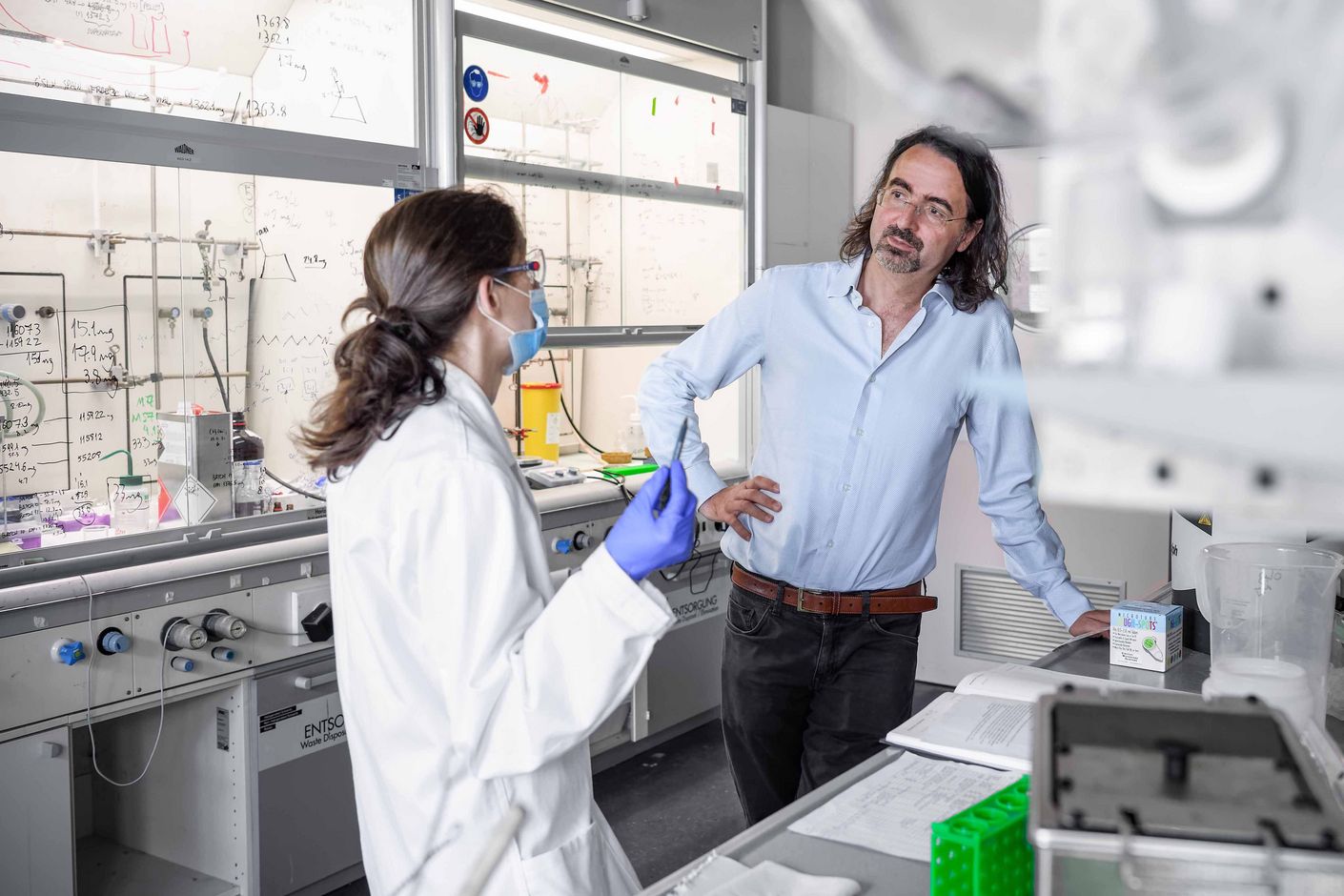
Is an “antivirotic” on the horizon?
Francesco Stellacci would like to grant the world of medicine a long-cherished wish: a drug that can be used to combat a wide range of viruses—including the novel coronavirus. Thanks to funding from the Werner Siemens Foundation, the professor at the École Polytechnique Fédérale de Lausanne can take his search for an “antivirotic” to the next level.
The coronavirus caught the world of 2020 unawares—small wonder that the search to find effective therapies and a vaccine is correspondingly intense. If the efforts are successful, our world will again be a different place. But even better would be realising the age-old dream of a drug that is effective against not just one, but a whole range of viruses. Experts estimate that our planet is home to thousands of different viruses, many of which can seriously impact the health of crops, livestock and humans. Roughly 50 viral infections are known to be responsible for the illness and death of millions of people a year around the globe. Vaccines have been developed for many of these diseases—smallpox, rubella, measles and hepatitis A and B—and effective therapies exist for several viral infections, including herpes, hepatitis B and HIV. Although this list is not exhaustive, it nevertheless remains modest in scope.
Spare the cell, harm the virus
What makes the development of antiviral drugs so difficult? Viruses have no metabolism of their own; instead, they reproduce by invading the cells of plants, animals and humans. We already know of so-called virocidal agents that are able to neutralise viruses—disinfectants, for example. But what works well on doorknobs, or even on the skin, can cause irreparable damage to cells inside the body. The antiviral medications of today share this problem: they generally work by preventing a virus from multiplying inside a cell. This approach, however, can also damage the cell and result in serious side effects in the host. Preventing a virus from invading a human cell in the first place is a much safer approach, and corresponding drugs have already been developed. Unfortunately, they are unable to permanently damage the virus.
Clever and effective deception
Francesco Stellacci is exploring an approach that completely destroys viruses. A professor of materials science and head of the Supramolecular Nano-Materials and Interfaces Laboratory at the Institute of Materials at the École Polytechnique Fédérale de Lausanne (EPFL), Stellacci has been working on developing a broad-spectrum antiviral agent for the past ten years. To begin, he researched gold nanoparticles, later shifting his focus to modified cyclodextrins, a sugar molecule that is currently used as a food additive and being tested as a potential atherosclerosis drug. Now Stellacci envisions a huge breakthrough—an advancement on the scale of what Scottish bacteriologist Alexander Fleming achieved with his discovery of penicillin, the antibiotic effective against a large range of bacteria. Similar to Fleming’s achievement, Francesco Stellacci aims to develop an “antivirotic” and to treat viral infections with cyclodextrins. In his approach, cyclodextrins are modified with alkyl chains—made up of carbon and hydrogen atoms—that are end-capped with sulphonic acid groups. After being modified, the cyclodextrins can trick a virus into thinking they are receptor molecules on the surface of a human cell. Drawn to these pseudo-receptors, the virus binds with the decoy.
Bind and squeeze
This basic idea of tricking a virus has been around since the 1930s, but deception alone fails to kill the virus. Stellacci has developed a two-pronged approach so that, after attracting the virus, the modified cyclodextrins can capture it with their long “arms” and literally squeeze the virus’s outside layer, known as the viral envelope; the mechanical pressure is so strong that it bursts the viral envelope. In contrast to current antiviral drugs, this process not only blocks a virus’s capacity to replicate: it also effectively and permanently destroys the virus. Afterwards, the immune system takes over and processes the viral remains. The best part of this approach is that the cell itself remains unharmed, as the entire process is extracellular.
First choice in treatment
Intercepting viruses before they invade a cell and working with mechanical pressure rather than applying a chemical principle—Francesco Stellacci believes this unique approach is the best way to develop a widely applicable antiviral therapy. Nevertheless, he warns that we should remain clear-eyed about a future drug: “Just as there’s no single antibiotic that can kill every kind of bacteria, there will probably never be a single substance that’s effective against all viruses. They’re just too diverse.” For example, not all viruses are attracted to this type of sugar molecule. That said, Stellacci estimates his agent could prove effective against 15 of the most serious diseases in humans caused by viruses. He is aiming for a drug that will be the first choice to treat viral infections, similar to penicillin, which remains the first choice in treating many bacterial infections. But just as prudent use of antibiotics is essential, it is important to proceed with care when prescribing an “antivirotic”, as viruses, too, can develop resistance to drugs. Nevertheless, Stellacci believes his approach reduces this danger in comparison to standard antiviral medications because the virus is attacked outside the cell.
How viruses reproduce
Francesco Stellacci’s approach to neutralising viruses
Focus on respiratory infections
With the advent of the Covid-19 pandemic, Stellacci began focusing his research on the novel coronavirus and other viruses that affect the respiratory system or that are transmitted through the air. “These are the kinds of viruses that bear the highest risk, that are most likely to cause pandemics,” says Stellacci. In his research, Francesco Stellacci works with specialists from the fields of virology and infectious diseases at the University of Geneva and the Geneva University Hospitals. His approach has already been effective in laboratory experiments: after being injected with modified cyclodextrins, human cells were no longer vulnerable to a wide range of viruses—including the novel coronavirus. Experiments with lung tissue grown in the lab were also successful, as were tests using the approach on influenza and herpes viruses in mice. Particularly promising is that, in initial attempts, the method has also proven effective against viruses lacking a viral envelope—that instead are enclosed in a protein shell called a capsid. This expands the number and kind of viral infections that could be successfully treated.
Clinical trials scheduled
The strong results from these tests impressed the Werner Siemens Foundation, which is funding the next phase of the project. From the spring of 2020 to the end of March 2021, Francesco Stellacci is conducting additional toxicological studies and preparing drug manufacturing practices with external partners. The main goal, however, is to present the results of the first clinical trial by the spring of 2021. During this phase, the drug will undergo its first test for its safety on humans at the Geneva University Hospitals. Various versions of the drug will be tested, and a patent has been filed for all agents used in the trial. If the results show the drug is safe, additional clinical trials will follow to test the efficacy of the approach on humans. “If all goes well and future funding can be secured, our agent should be available as a drug by 2025 at the latest. We expect it will be in the form of a throat spray,” says Stellacci. An antivirotic throat spray—an elegantly simple solution to a serious global problem. One that has taken on new urgency in the wake of the novel coronavirus.
Text: Adrian Ritter
Photos: Felix Wey
